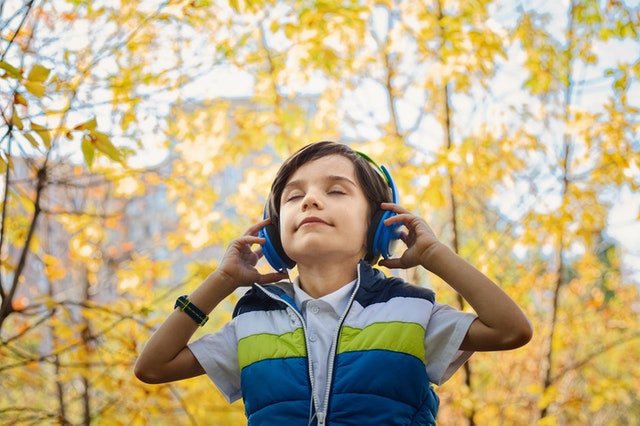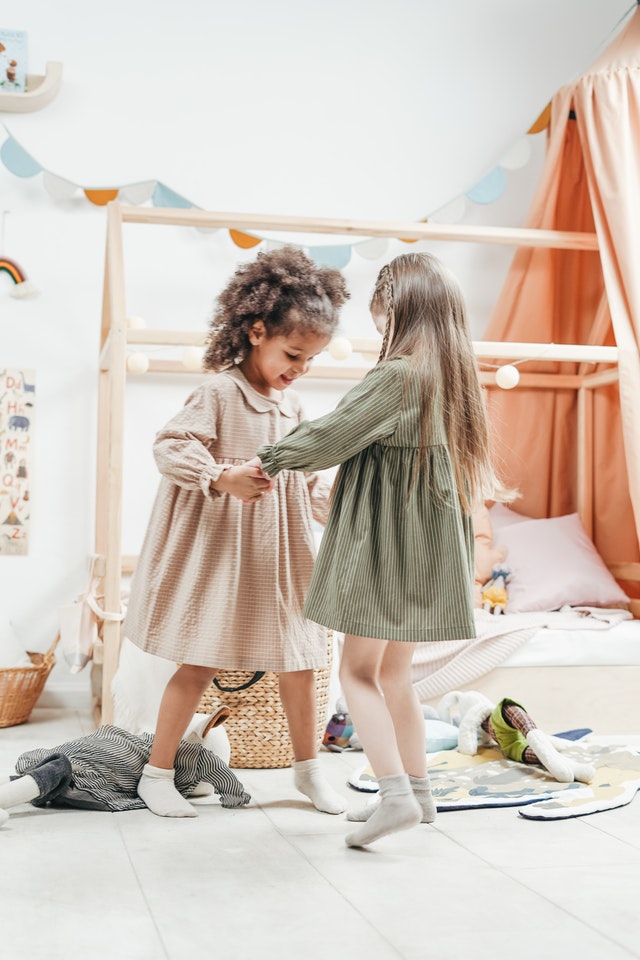

Listening is the gateway to understanding and communicating and, therefore, is absolutely critical for language learners of all levels.
If students struggle to listen carefully, they will miss out on important interactions both inside and outside of the classroom.
In today’s digital world, it’s much harder for teachers to engage their students in active listening. Students are constantly distracted by keeping up with their friends on social media and texts and emails. If students struggle to listen carefully, they will miss out on important interactions both inside and outside of the classroom, including the necessary comprehension, pronunciation and communication skills.
The problem with listening instruction is that it is commonly thought to be boring and passive; students simply sit and listen. However, teaching listening doesn’t have to be dull! There are many ways to create engaging and interactive lessons that focus on listening skills. Here are eight different ways to build students’ listening skills:

Try These 8 Activities to Improve Listening Skills
-
1
Voice blogging
Using a free website (such as Voice Thread) have students record voice journals about their week. Encourage students with semi-personal topics or hypothetical questions (e.g. What would you do if you had one million dollars? Describe your best vacation. etc..) to prompt speaking. This works just like a blog but with student voices rather than writing. Even if your school doesn’t have computers with microphones or recording capabilities, with VoiceThread students can use any phone to record their voice blog.
Students can then be assigned to listen to several of their classmates and give each other comments. By listening to each other and giving encouraging comments, you are building a positive classroom environment and cooperation within the classroom all while students build their listening skills.
-
2
Listen for the hidden phrase
An engaging activity for the whole class is to pair students up and give each pair a "secret" word or phrase. For easier dialogues, give a simple phrase such as “I love soccer,” or “My father works a lot;” etc… To challenge students, give a slightly more obscure phrase, such as “John does yoga every Saturday,” or “I saw a UFO in my yard last night.”
Students are then tasked with developing a dialogue with their partner that somehow uses this phrase. Students may script the dialogue if they wish, but only give them limited planning time (5-10 minutes). After they have prepared their dialogue, students perform the dialogue in front of the class, and the other students listen carefully to hear which words or phrases seem extra-carefully planned to find the secret phase. If you have individual whiteboards, have the students write down the phrase as they hear it and then show their board after the pair has finished the dialogue. If they found the correct secret phrase, they get a point. If no one finds the pair’s secret phrase, the pair that developed the dialogue gets a point.
-
3
Listen for the word
Using popular culture media is always a good way to practice listening skills. Using songs, watching TV shows, or even listening to podcasts will help build skills. To go an extra step, have an additional task while listening to the song or TV show, such as assigning students different words to listen for and having them keep track of how often they hear these words. This is particularly helpful with reductions like gonna, wanna, hafta.
Listening to various media is also a good time to practice unfamiliar words. Encourage students to write down words they have never heard before. Without subtitles or lyrics, students will have to rely on the sounds they think they hear to guess at how to spell this unfamiliar word. Encourage students to write down other surrounding words to help them decipher what the word might be or write down the time they heard the word so they can go back to the spot and listen again. These are important skills for students to master so that they can continue learning even outside of the classroom by hearing new words. For advanced or adult learners, suggest they try these sources.
-

-
4
Student-designed quizzes
If students are in a computer lab or if they have iPads/iPhones, give each student a dialogue, lecture, or song to listen to. These can be easily found on various free listening websites. Have students listen to the lecture multiple times and then create a quiz for another student to take. Students will be excited to “play teacher” by creating quiz questions, and they will have to rely on their listening skills to write accurate questions.
-
5
Describe the...
Place students in pairs and have them sit back-to-back. Give one student in the pair a unique picture with a lot of simple shapes drawn on it. I prefer to draw my own pictures with some randomly placed like:
- Hearts
- Flowers
- Stars
- Houses
- Stick Figures
-
Put these shapes in different places, angles, and with extra features as desired. Give the second student in the pair a blank piece of paper. The student with the picture must dictate to his/her partner how to draw the picture. Make sure to emphasize no cheating or peeking! When finished, swap the pictures around the groups and have the partners switch roles. When everyone has drawn once, the team with the most similar pictures wins!
-
6
Placing the celebrity
Similar to the picture describing game, this game has a similar setup but without the drawing. Give students a chart with many different celebrities in the boxes/grid. This can be easily done by creating a table in a word processing program and pasting internet images of celebrities in the table. Be sure to make several different versions with celebrities in the different spaces. It’s okay if the students don’t know all of the celebrities; in fact, it may be better if there are some they don’t know, so they have to rely on describing physical features rather than giving names. Print a second blank grid with the pictures of the celebrities cut out into individual pieces but not attached to the grid.
Students should sit back-to-back. Instruct them to not peek or cheat. The student with the table with pre-assigned celebrities should give the other student instructions on how to fill in his table with the celebrity picture pieces. For example, the first student might say “The picture of Brad Pitt goes in the first square, and Angelina goes in the square below Brad Pitt.” It may be helpful to pre-teach the vocabulary “columns” and “rows.”
-
7
Stand up/sit down workout
When working on individual sounds, give students a target sound and then read a script out loud that contains multiple examples of this sound. For example, if you are practicing the /ae/ sound (like in “cat,” “hat,” etc…, you could read the following script. “Yesterday, my cat ate a plastic toy and swallowed it fast.” Whenever students hear this sound for the first time (cat), they should stand. When they hear it again (plastic), sit down. Read slowly enough for them to have time to stand up or sit down. This activity is great because it gets them out of their seats and lets them get some excess energy out!
-

-
8
Vowel discrimination
Another good activity to do when you are studying specific vowel sounds is to give students two different color note cards (e.g. one red card and one blue card). For a review activity, assign one vowel to the red card (e.g. the /ae/ sound as in “bat”) and another card to the blue card (e.g. the /ei/ sound as in “bay”). When you read a word, have students raise the card in the air for the correct vowel/sound they heard. For a more advanced game, give students several colors of cards to correspond with several different vowels. Also, you could give the students several cards and read a sentence where each word represents a different vowel. Students must recreate the pattern of sounds they heard by lining up their note cards in the correct order.
Tips to Promote Listening Skills
-
1
Encourage
Encourage students to learn to work together, listen carefully to each other’s ideas, and express opinions.
2Inspire
Inspire them to incorporate what they have learned from oral, visual, and media sources, and to evaluate what they hear to improve their ability to communicate.
3Motivate
Motivate students by adapting content for different learning styles then give them feedback.
4Support
Support them with encouragement and empathy.
Students engage in listening every day, so it’s important for ESL students to continue developing their listening skills.
Engaging them in fun listening activities will hopefully motivate them to practice more listening and take advantage of all opportunities around them. We love the "oldie but a goodie" Broken Telephone game. This simple game is fun and helps children focus on listening and practicing their speaking This classic game is played in a group. The game begins with a word or phrase. This can be simple to start with – more difficult words or phrases can be introduced later. Children sit in a large circle and one child whispers a word or phrase into the ear of the person sitting next to them. The word or phrase is then passed on in this way. The last person in the circle says the word or phrase out loud to see if it is the same as the original word or phrase. Class members can make up their own phrases.
How do you get your students excited for listening practice?
P.S. If you enjoyed this article, please help spread it by clicking one of those sharing buttons below. And if you are interested in more, you should follow our Facebook page where we share more about creative, non-boring ways to teach English.






